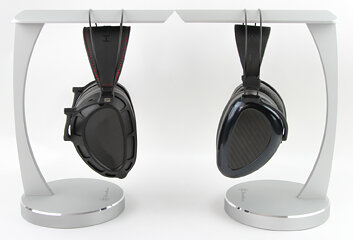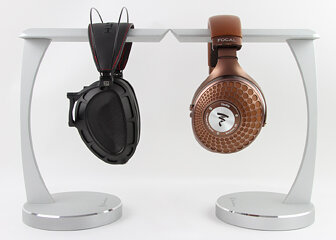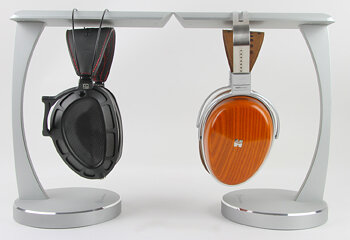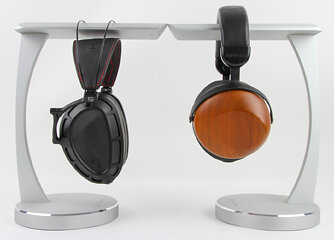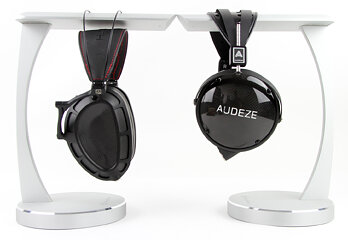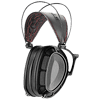 24
24
Dan Clark Audio STEALTH Flagship Closed-Back Headphones Review
Value & Conclusion »Comparisons
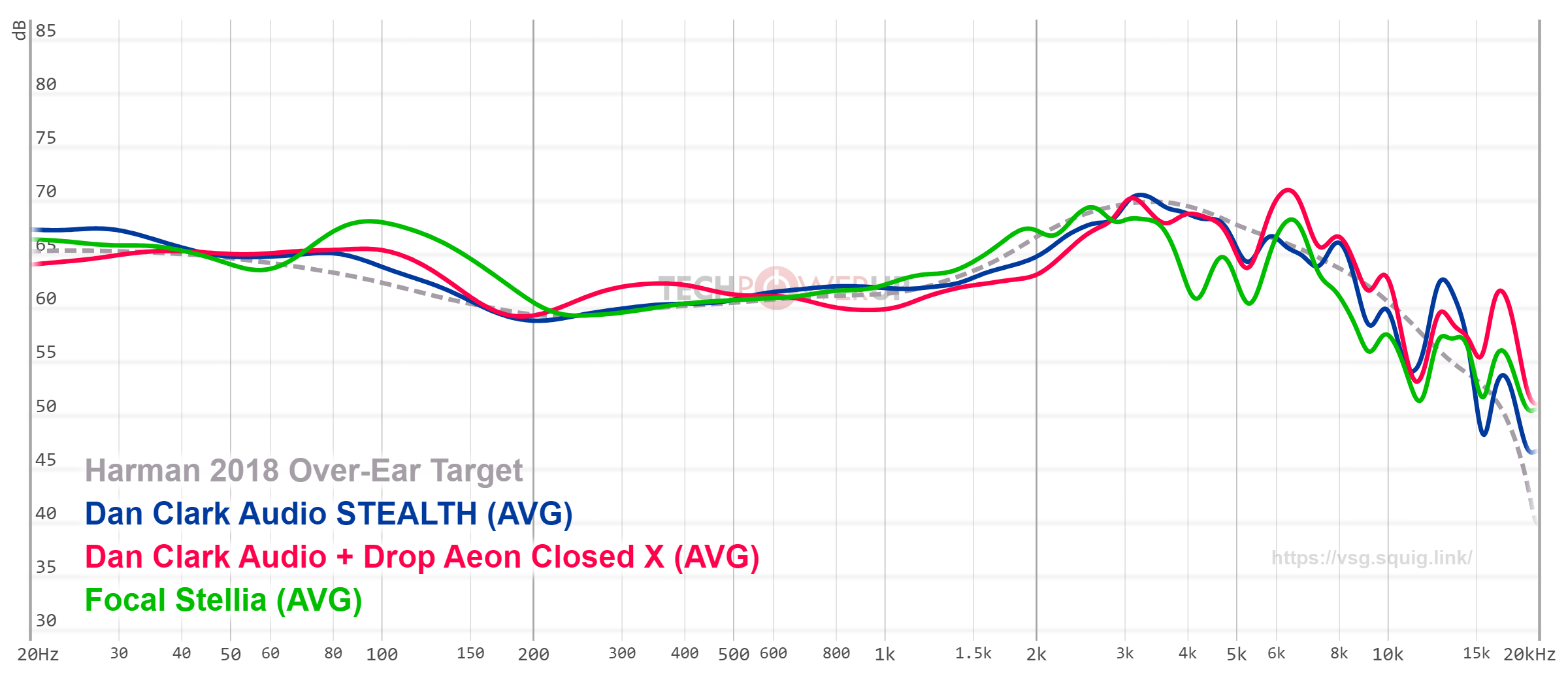
My first introduction to Dan Clark Audio came in the form of the Aeon Closed X, a collaboration with Drop that is one of the better closed-back sets in the <$500 price range. In fact, I would even say this is the closed-back set to get if you can afford it and want to get a taste of Harman tuning for headphones and everything else at my disposal goes for a different flavor of the V-shaped tuning. Of course there are some wireless headphones/headsets with DSP (EQ) to help with tonality already but I can't speak for the likes of the Audeze Maxwell until I can test it out and the Focal Bathys is best used in the default "balanced V-shaped" tonality. In the meantime, my suggestion for someone who likes what they have read about the STEALTH but can't afford it is to go for the likes of the Aeon Closed X or Aeon RT first, get a taste of the DCA tuning style and design, and then see whether you can demo the STEALTH where the differences will be obvious, although not necessarily offering as good value for money. The STEALTH is more comfortable, better built, more isolating, has amazing quality control—the Aeon series isn't a sloucher though—and is more resolving and fun while sounding more accurate too owing to the use of AMTS as opposed to damping filters. It's effectively the Aeon Closed X on audiophile steroids while wearing a 3-piece suit on the outside.
Given I had no flagship closed-back dynamic driver sets at the time the STEALTH arrived, I reached out to Headphones.com who were kind enough to loan a Focal Stellia for comparison and its own review coming up down the line. The Stellia uses pure beryllium diaphragm drivers in a very similar miniature speaker-style configuration and damping on the back of the ear cups. It is the closed-back partner to the original Utopia headphones, which have since been updated, and is long in the tooth now in headphone years. The design is striking yet divisive and there have been more reports about this headband design cracking for some people than I'd like to have seen either. I haven't experienced anything like that and the driver voice coils have been fine too in my typical listening volume range at ~70-75 dB max. The Stellia folds flat and comes in a nice carry case that does have room for the cable while also being less demanding than the STEALTH, so it can be a more practical on-the-go set. It's not as comfortable though and I felt an increased pressure in my ears after ~15-20 min of use which necessitated minor adjustments often. It's also tuned in a Harman-ish manner but really goes for a massive mid-bass boost to get a lot of emphasis and punch. This is far too much bass for me and not the most balanced either and yet can be fun for those who like to have a personal nightclub thumping in the ears. The upper mids and treble is where the STEALTH really showcases its balance better with the Stellia not being smooth and arguably somewhat fatiguing with a pronounced 6-7 kHz peak for me. The Stellia can be found for nearly half the cost of the STEALTH and yet you barely see anyone talking about it or recommending it these days. I do see potential in this platform but Focal needs to update it sooner than later to keep up with the competition, including from its own lineup where I'd probably take the Bathys over the Stellia for the portable use case.
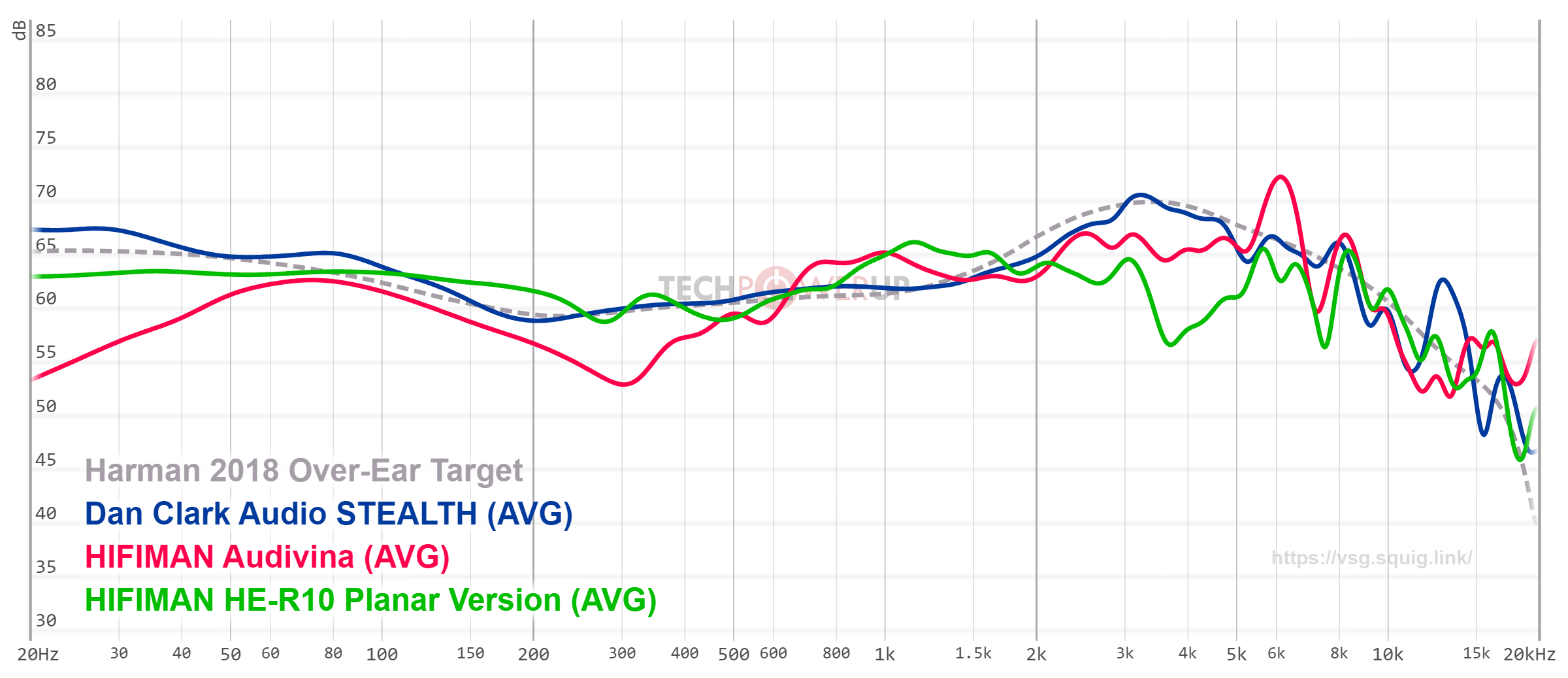
Remember when I said my bar for closed-back headphones is low? HIFIMAN has a lot to do with it. I have here five different closed-back sets from HIFIMAN ranging from the HE-R9 which currently sells for $109 to the HE-R10 Planar Version that is still going for a whopping $5499. Every single HIFIMAN closed-back has issues in tonality at least, and many even manage to impress in how cheap they feel for the cost. Most of these have had big price cuts lately to better reflect what the market thinks but the two most expensive sets are still at MSRP somehow. The latest release, the planar magnetic HIFIMAN Audivina, is one of the worst offenders at the $2000 price range. It looks and feels great, can be extremely comfortable, is lightweight and comes in a decent carry case too. But it's not very isolating and somehow manages to amplify any external noise in its ear cups to completely defeat the purpose of having a closed-back set. This weak isolation is also affecting bass extension, or lack thereof, and makes it a half-trick pony in working decently for some string instruments and not much else. Let's just say there's a reason I am not even reviewing the Audivina since I'd rather use my time elsewhere.
Then there's the confusing closed-back flagship HE-R10 Planar Version. It released in the version you see in the photo to the right above but was almost immediately greeted with complaints about how cheap it looked and about that headband being the same as on far less expensive headphones. To HIFIMAN's credit, this particular headband allowed for internal wiring from one side to another thus allowing the HE-R10 (among others) to be compatible with its Bluemini R2R wireless DAC/amp adapter making the HE-R10 one of the most technically competent wireless headphones ever made. You could improve its tonality significantly with EQ but it still felt held back in the upper mids and treble, possibly due to the basic foam damping system used. HIFIMAN quickly updated the design to be more in line with how the Audivina now looks, albeit with the same ear cups and drivers as before, and added in stealth magnets to try and make it more appealing. It has not worked since the sound presentation is still the same and now you have more comfort but lost the wireless novelty feature. There is no world in which I can recommend purchasing this over the STEALTH.
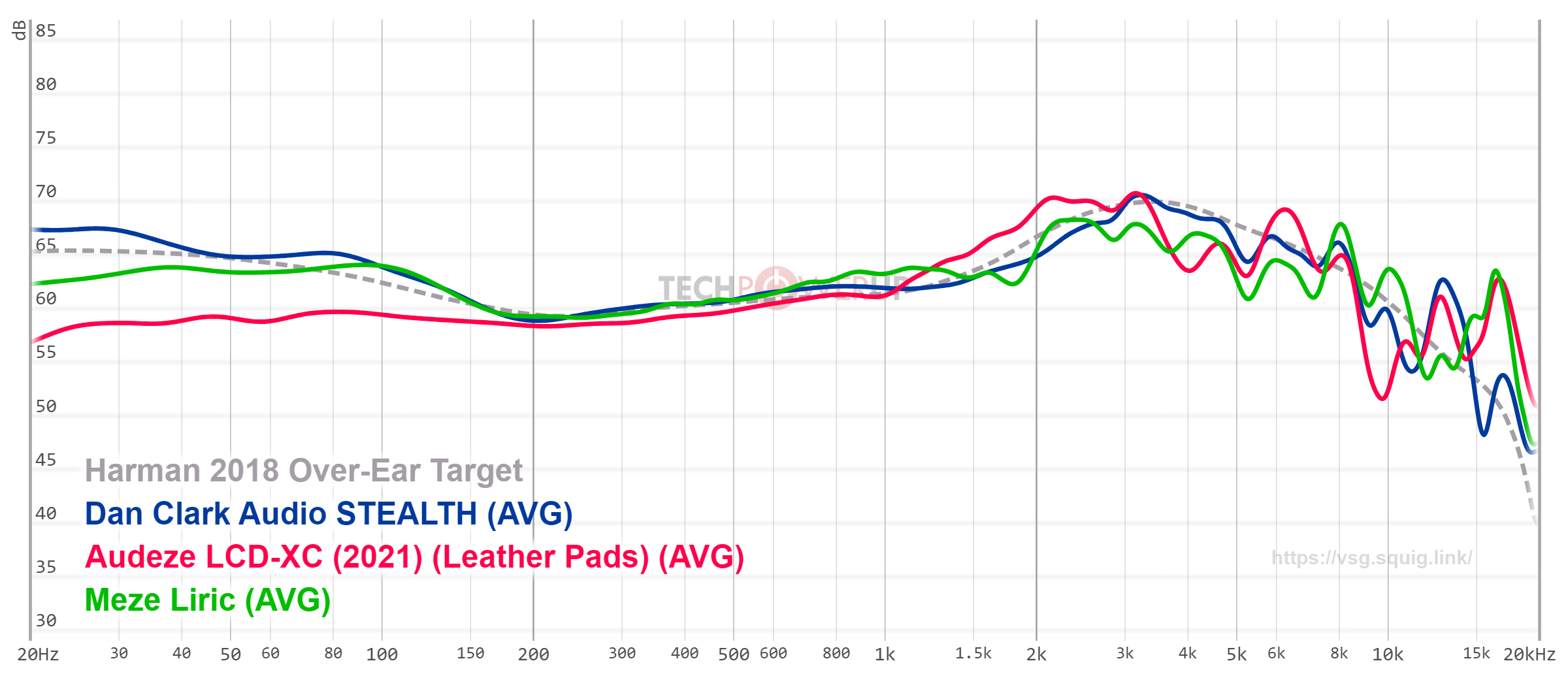
Audeze is another brand which immediately comes to mind when thinking about planar magnetic headphones. It's mostly known for its open-back sets where it has two flagships in the form of the LCD-5 and the e-stat CRBN, and its current closed-back contenders are all well under the $1500 mark. The LCD-XC in its latest iteration is thus the de-facto Audeze comparison to make here. This is a big and heavy set with large planar magnetic drivers and relatively massive ear cups which is from an era that resulted in a lot of "Audeze neck" memes owing to its 677 g mass and higher-than-average clamp pressure. It's quite isolating too and comes in a larger suitcase-style carry case which almost necessitates taking it by itself rather than placing it inside a backpack. Audeze is targeting music professionals with the LCD-XC and has support for Reveal+ software that offers personalized HRTF and monitoring studio profiles. I can use the LXD-XC for 1-2 hours without issues but then discomfort does build whereas my partner would not even wear it for more than a minute, so please be aware that the LCD-XC can be physically fatiguing even before you plug it in. It leans towards neutral bright in tonality and comes off overly mid-forward but is quite receptive to EQ. You could add a bass shelf if you wanted that planar bass speed without the smear some products get, which can also help balance out the upper mids to an extent. The treble is harder to work with though, unless you pay for Reveal+ and hope the personalized HRTF-based EQ will work for you. There is certainly potential for the LCD-XC with extensive EQ to offer increased dynamics and punch compared to the STEALTH, although it doesn't necessarily sound accurate at that point and it does have a narrower soundstage than the STEALTH. The LCD-XC is best used as a tool to mix and master with the tuning caveats in mind, or listen to songs for shorter durations of time with or without EQ. The STEALTH is absolutely more appealing out of the box and doesn't require a re-design to be more comfortable.
Then there's Europe-based Meze Audio which puts out some beautiful and extremely comfortable headphones. The Meze Elite is my benchmark for headphone comfort and I would love to see what they can do with a closed-back set using the same design. As it turns out, the current Meze closed-back offerings either go the dynamic driver V-shaped mainstream route that isn't to my liking, or the more premium planar magnetic road with the Meze Liric prioritizing style and portability. I no longer have the Liric here, hence the lack of a photo above, and thus I won't speak too much here since auditory memory isn't to be trusted. The Liric does look gorgeous and well built; I also recall it being comfortable enough for me although those with larger ears might find the ear pads slightly wanting. You can also see the Harman target inspiration here with a defined bass shelf and decent extension throughout, albeit possibly way too much in the higher frequencies since a brighter, fatiguing sound is one of the complaints I see associated with the Liric. There are also other closed-back contenders for your money from other brands such as ZMF, Kennerton, even Abyss is working on a closed-back set as brands are seeing the growing market of customers working from home or a shared space and needing a nice-sounding set of headphones which isolates well. I can't speak for any of these without having tested them though, but rest assured the STEALTH will be in the comparisons if that ever happens.
Jul 24th, 2025 20:50 CDT
change timezone
Latest GPU Drivers
New Forum Posts
- R9 7900X - 5070Ti - Lags / Stuttering (14)
- Lexar NM790 (4TB) made my PC go back to Windows XP days, since it caused my PC to be SO slow and laggy! (23)
- Current Sales, Bundles, Giveaways (10348)
- What's your latest tech purchase? (24357)
- B580 tanks performance with low end CPUs (215)
- 14900k high voltage (43)
- Windows 10 Vs 11, Which one to choose? (230)
- Solidigm NVMe Custom Modded Driver for All NVMe Brands SSDs & Any NVMe SSDs (233)
- VMware Workstation is now free for everyone (29)
- I'm not really impressed with the AMD Z2 extreme processor (2)
Popular Reviews
- Noctua NF-A12x25 G2 PWM Fan Review
- MSI MPG B850I Edge Ti Wi-Fi Review
- UPERFECT UMax 24 Review
- Cougar OmnyX Review
- TerraMaster F4-424 Max Review - The fastest NAS we've tested so far
- Thermal Grizzly WireView Pro Review
- Sharkoon OfficePal C10 Review - Affordable and Decent
- VAXEE XE V2 Wireless Review
- Upcoming Hardware Launches 2025 (Updated May 2025)
- Razer Blade 16 (2025) Review - Thin, Light, Punchy, and Efficient
TPU on YouTube
Controversial News Posts
- Some Intel Nova Lake CPUs Rumored to Challenge AMD's 3D V-Cache in Desktop Gaming (140)
- AMD Radeon RX 9070 XT Gains 9% Performance at 1440p with Latest Driver, Beats RTX 5070 Ti (131)
- AMD's Upcoming UDNA / RDNA 5 GPU Could Feature 96 CUs and 384-bit Memory Bus (119)
- NVIDIA GeForce RTX 5080 SUPER Could Feature 24 GB Memory, Increased Power Limits (115)
- NVIDIA DLSS Transformer Cuts VRAM Usage by 20% (99)
- AMD Sampling Next-Gen Ryzen Desktop "Medusa Ridge," Sees Incremental IPC Upgrade, New cIOD (97)
- NVIDIA Becomes First Company Ever to Hit $4 Trillion Market-Cap (94)
- Windows 12 Delayed as Microsoft Prepares Windows 11 25H2 Update (92)
